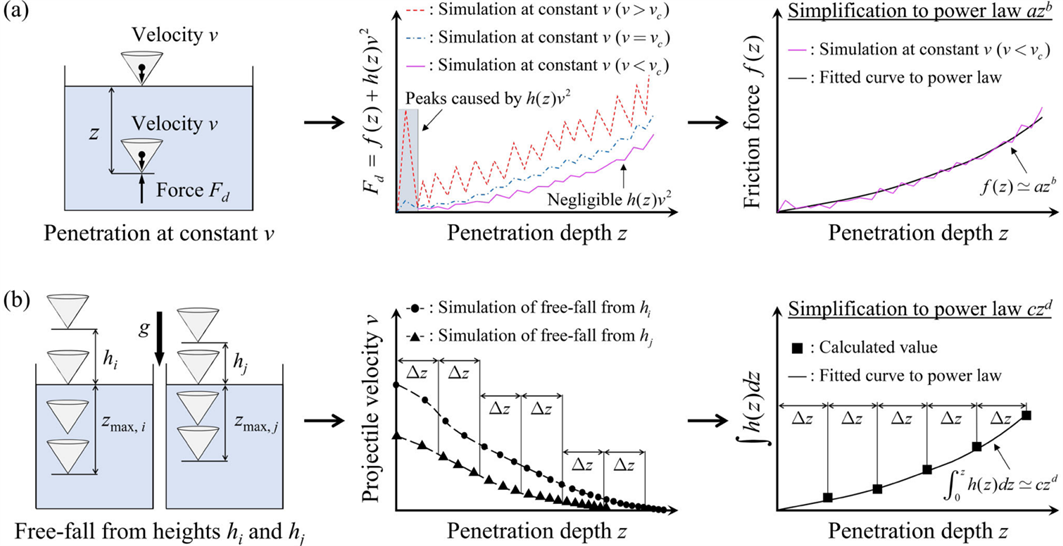[131] Analysis of cone-shaped projectile behavior during penetration into granular particles using the discrete element method
H. M. Lee, T. H. Kim, and G. H. Yoon. Computational Particle Mechanics (2023): 1-15.
In this study, the penetration behavior of a cone-shaped projectile into granular particles was analyzed using simulations based on the discrete element method (DEM). The rate-independent friction force and inertial drag force proportional to the squared projectile velocity are the principal force terms that interact between the projectile and the particles. Simulation results show that the friction force and inertial drag force follow the power law with respect to penetration depth and have changing tendencies before and after the complete penetration of the projectile into particles. Based on the results, a mathematical model is proposed to simplify the force terms using the penetration depth, projectile tip angle, and projectile length. The simplified force terms are physically explained using changes in the projectile–particle contact area and the fluidization of particles during dynamic collisions. Experiments were conducted using steel projectiles and ABS plastic beads to verify the accuracy of the mathematical model for real-life cases. The results of this study validate the proposed mathematical model of the rate-independent friction force and inertial drag force regarding the cone-shaped projectile behavior during penetration into granular particles.
